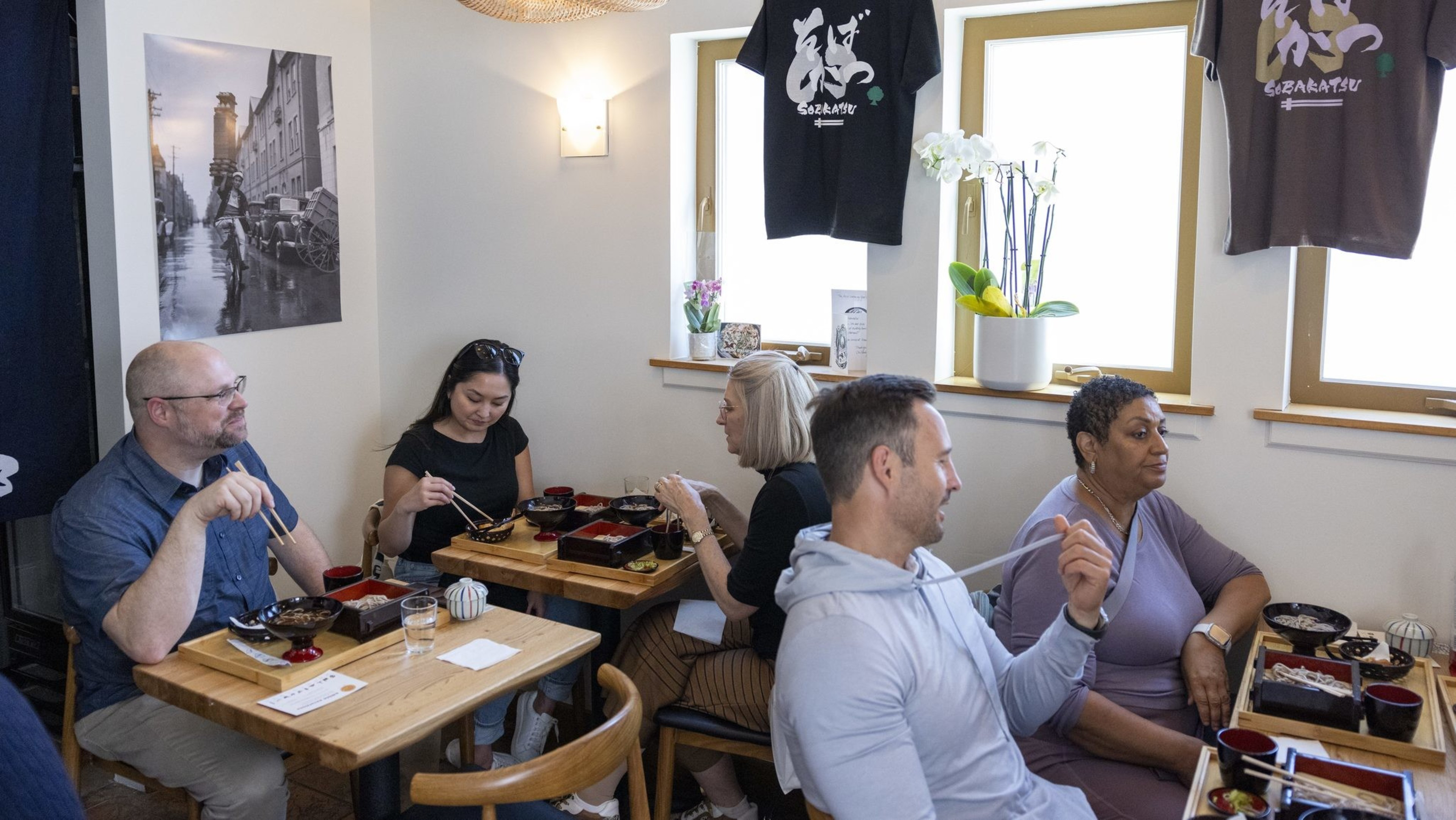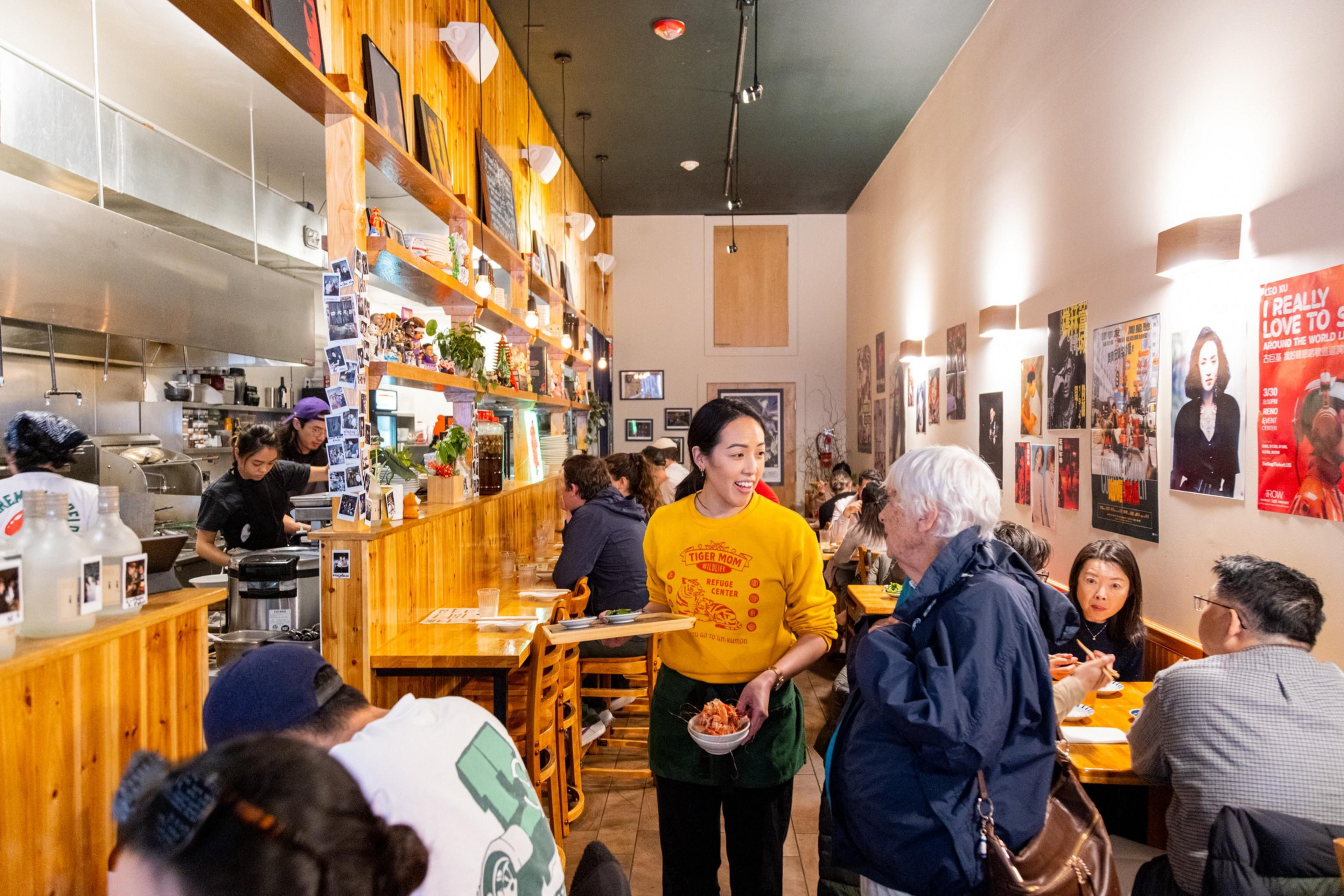Pete Sittnick remembers when his sibling restaurants Waterbar and Epic Steak debuted on the San Francisco waterfront in 2008. With unparalleled views of the Bay Bridge and Treasure Island beyond, the sprawling restaurants — designed by impresario Pat Kuleto — welcomed (and still do) nearly 300 diners at any time, celebrating birthdays, engagements, or just a big night out on the town. “They called these restaurants ‘monsters of rock,’” the manager-partner says, “like those rock bands in the ’90s that would sell out big stadium tours.”
The chefs, restaurants, bars, and bakeries changing the flavor of San Francisco
Read the stories
But like the power rock bands of the ’80s and ’90s, massive establishments like Waterbar and Epic Steak have become living legends of a bygone era. It’s not an optical illusion: San Francisco restaurants are shrinking.
These days, it’s far more common for new restaurants to occupy tight spaces with just a few dozen seats. Pamela Mendelsohn, a principal with Maven Properties, says restaurants have been getting smaller for a decade. But the trend accelerated after the pandemic, when owners realized it’s easier to pivot — to change a menu or overhaul a concept — when you’re working with a smaller space. “Successful people want small spaces,” Mendelsohn says, “and multiple of them.”
The proof is everywhere. Four Kings in Chinatown, one of the year’s most nationally celebrated debuts, packs just 36 seats — a mere 10% of Waterbar’s capacity — into 1,000 square feet. In Japantown, diners wait hours for their turn to slurp freshly made noodles in one of Sobakatsu’s scant 10 seats. At the 2-year-old French restaurant Mijoté, there are only a handful of tables, plus a dozen or so seats at the bar; Showa serves its Japanese tasting menu to just 18 customers a night. It’s still a fight to get a reservation at the 18-seat Handroll Project two years after it debuted in the Mission, while ramen-focused Noodle in a Haystack sells out its 10 seats two months in advance. Sittnick draws out the rock band comparison further: “People like to play in more intimate venues.”
The diminishing footprint of SF restaurants “boils down to the economics,” Sittnick says. The pressure of committing to a high fixed cost like rent on a large space can be intimidating for independent restaurateurs. Additionally, rent isn’t the only thing that gets more expensive with a larger business. “It’s the staffing,” Sittnick says, noting that places the size of Waterbar and Epic Steak typically require two managers and a small army of servers, bussers, cooks, and dishwashers to operate smoothly. “Labor is really the biggest cost center. It’s overtaken food and beverage costs, especially with the associated cost of benefits. It’s not just payroll; it’s health insurance and workers’ comp and payroll taxes.”

The other driving force is diners — or, rather, the relative lack thereof. Smaller spaces require fewer butts filling seats. “I think the public’s desire to go out to eat has softened,” the restaurateur says. “There’s the psychological impact of how people have felt after the pandemic: They’re just comfortable at home.”
There is, however, a tangible upside to San Francisco’s indie-band era: Tiny restaurants are cozy, intimate, and, when done right, fun. Whereas eating in a desolate, mostly empty dining room can be unsettling, a small-scale restaurant feels comforting, even if it’s only half-full.


Four Kings, however, is always packed. On a November night, a dozen people lingered on the sidewalk under the glow of a Kumon (opens in new tab) sign (a relic of the previous tenant), waiting to claim one of the highly sought-after tables. The crowd littering the otherwise tranquil street gave the restaurant an ambient allure, messaging wordlessly that it was worth the effort and patience required to get in.
Inside, the dining room buzzed with conversation as diners bumped elbows while passing plates of saddle-brown squab and jiggly jellyfish salad slick with hot mustard. Sitting at the two-person counter facing the street provided the rare pleasure of hiding in plain sight, as diners coyly pretended not to notice the strangers hungrily eyeing their meals from the other side of the glass.


“There’s something nice about a tight space,” says Adam Rosenblum, chef and co-owner of Causwells (opens in new tab) and Lilah, a 500-square-foot cocktail bar located in a former eyeglass shop in the Marina. “There’s a nice sense of being in those bohemian restaurants in New York City and little European cafes. You feel cozy.”
Rosenblum, a “true believer in the small footprint model,” says there’s no better setting for connecting with diners than a small, crowded dining room. Causwells, which occupies about 1,500 square feet, taught him to navigate the complexities of running a business in tight quarters; at Lilah, the owners cut the tables to just 24 inches wide and filled the kitchen with equipment that wouldn’t overload the single electrical panel.
In fact, he and business partner Elmer Mejicanos are so committed to small restaurants that they’ve signed a lease on a 630-square-foot space where they plan to open a new project early next year. The buildout on pint-sized spaces is cheaper, Rosenblum acknowledges, but for him, it’s not about saving money so much as creating an atmosphere that’s less like a stadium concert and more like a dinner party. “I don’t know that we would have wanted 1,000 square feet,” he says of the forthcoming space, “because one of the things we love about what we do is the true sense of hospitality.”

